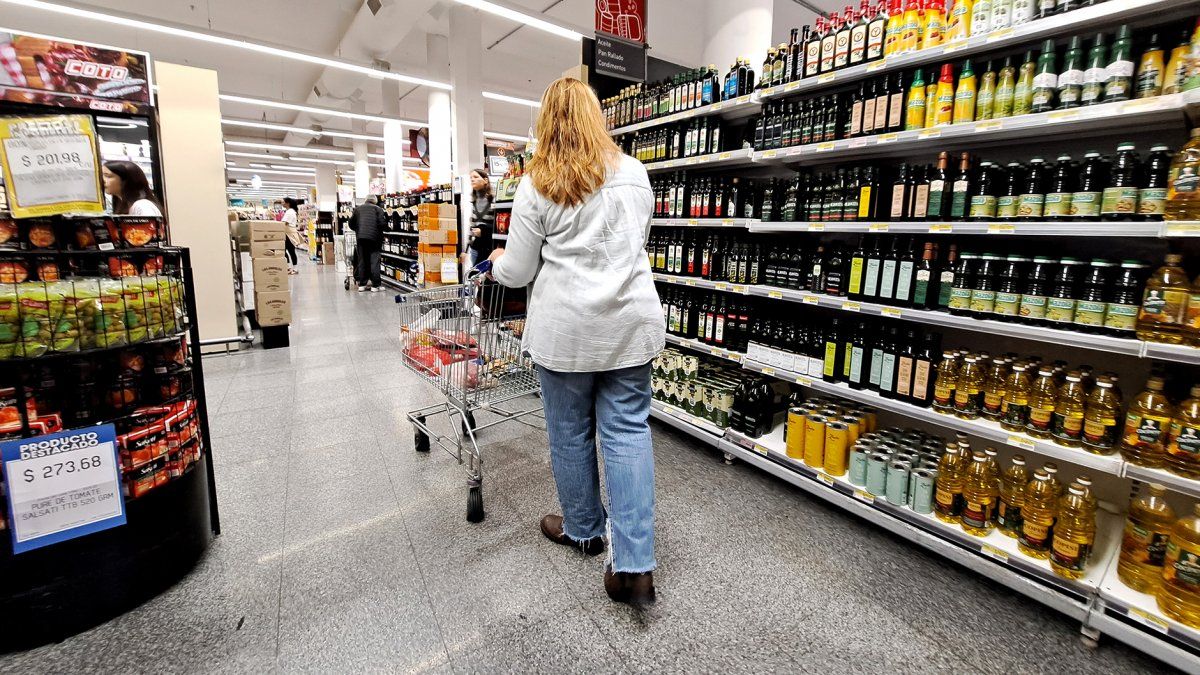According to the study prepared monthly by the consulting firm Scentia, mass consumption fell 0.3% year-on-year in April, to accumulate a contraction of 0.6% in the first four months of the year. “Although the difference in the behavior between channels is repeated, this time, the positive of the Supermarkets channel was not enough to neutralize the fall of independent self-services,” they detailed from the firm.
Specifically, the study revealed that the consumption in large chains continued its positive trend, growing 9.4% year-on-yearwhile small local self-services contracted for the tenth consecutive month: they fell 8.7%. In March, the decline was 6%, compared to an increase of 10.4% in the supermarket channel.
“All the baskets were positive in Supermarkets, especially alcoholic beverages, unlike Self-Services where all have been negative, especially Cleaning, Hygiene and Cosmetics,” the report highlighted.
In the accumulated annual, the large chains grow 8.6% compared to the first quarter of 2022. While local self-services fell 8.2% (in the AMBA this contraction is 12.1%).
Other “gap” that is observed in mass consumption is by region: while it grows in the interior of the country, it falls into the AMBA. For example, in the metropolitan area a 4.5% year-on-year drop was registered in April (accumulating a contraction of 0.8% in the first four months of the year), while the rest of the country saw growth of 2 .6% in April (falls 0.3% in the annual accumulated).
Analysis
“Since September we have been observing a loss of dynamism in mass consumptionon which the greatest impact that the inflationary acceleration is having on real income”, he analyzed Ambit Santiago Manoukian, Head of Research at Ecolatina.
“In second place, the Scentia survey continues to reflect the duality of the labor market and the incidence of Fair Prices: consumption in independent self-service stores, where the poorest population tends to consume in a greater proportion -in a context in which informal sector wages are the most affected- shows a much worse performance than demand in super and hypermarkets, where mostly the benefits of Fair Prices. Likewise, these last channels benefit from offering a broader menu of means of payment and promotions”, highlighted the analyst.
In this sense, Manoukian explained that “current mass consumption levels are quite low in historical terms, based on the Scentia study: 12% below 2015; 10% less than 2016 or 5% less than 2017”.
Meanwhile, as Damián Di Pace, director of the Focus Market consultancy, explained, the rise experienced by alternative dollars during April also had an impact: “The mass consumption channel had many problems with the rise in the dollar in the different versions in the parallel market. The merchants had daily modification of price lists, delivery of merchandise with quotas, change of the conditions of offers and promotions for purchases with volumes. Given the shortage of dollars in the Central Bank and import approvals delayed for several months, alternative prices are the new market price for many inputs and raw materials necessary to finalize the products that reach the shelves.”
In this context, future prospects are not encouraging in terms of mass consumption. “Going forward, it is expected that this trend will continue. Wages can hardly beat inflation this year, while the Government has little fiscal room to promote an income policy that contributes to greatly mitigate the blow that inflation inflicts on the income of the most vulnerable sectors”, Manoukian concluded.
Source: Ambito




